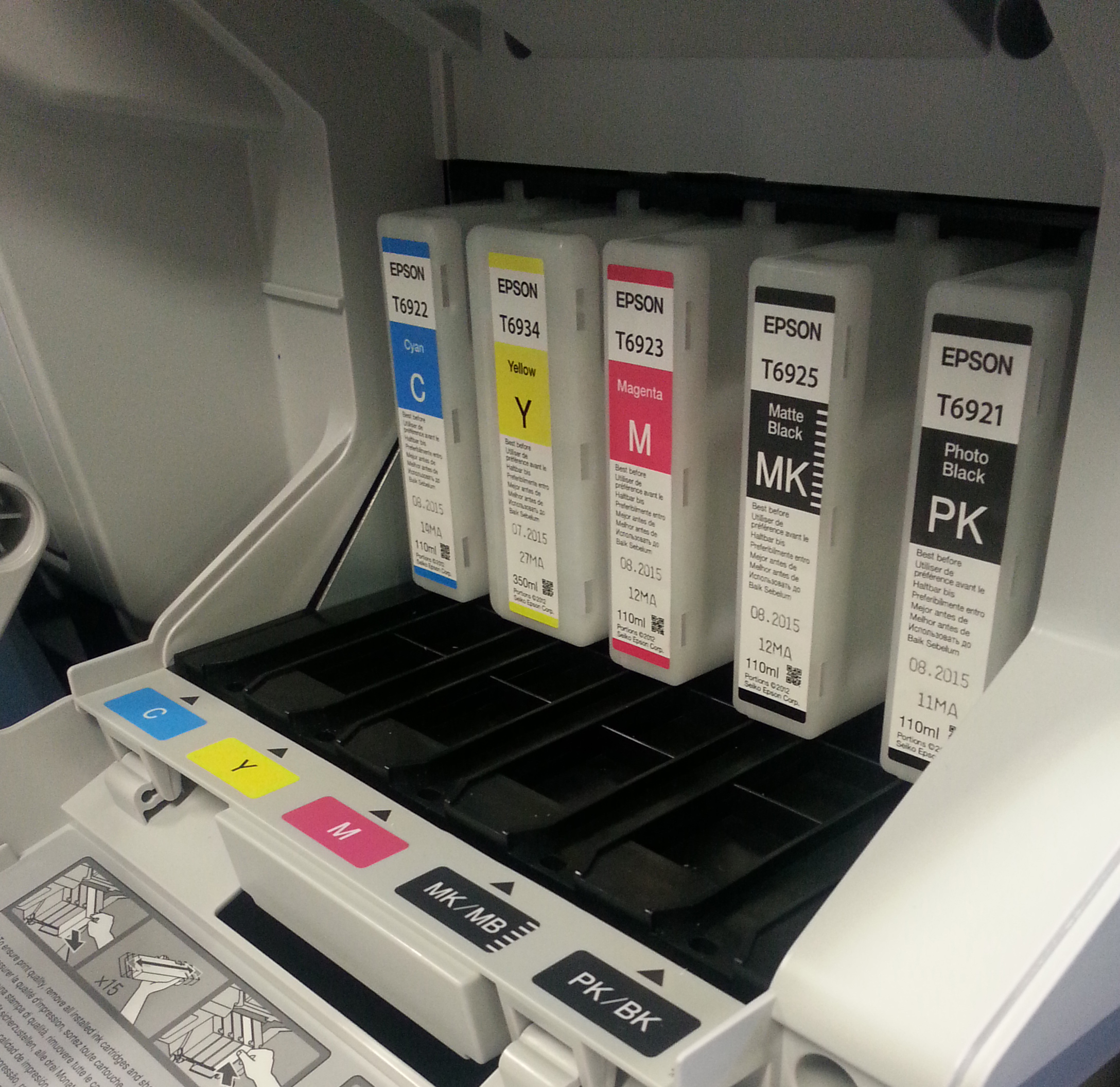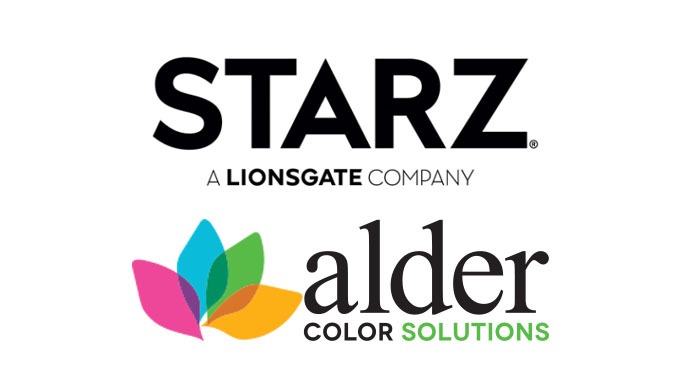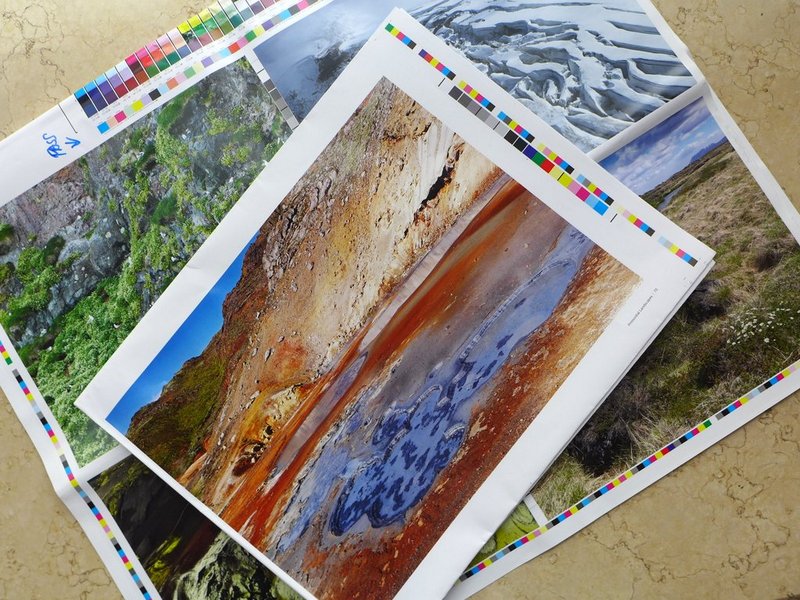Matte Black vs. Photo Black
Most modern pigment inkjet printers use both a photo black ink and a matte black ink (not simultaneously though). In trying to develop a darker black ink for uncoated papers (cotton fine art, watercolor papers and other matte uncoated papers) the manufacturers were unable to get the ink to dry on coated papers, so they had to resort to two inks. Standard black, usually referred to as photo black, for glossy, semigloss, satin, semimatte, and luster papers, and matte black, which prints darker on the uncoated fine art papers but doesn’t dry on the coated papers.
Customers often ask if they need to use Matte Black ink with a certain paper. There are several ways to find out.
1. Many inkjet print drivers will automatically select the correct ink based on the paper you choose in the media pop-up menu when printing. In some printer windows you get to choose, but in many you do not, as the ink feature is grayed out for many paper selections. In fact, some printers even switch the inks for you on the fly, so you actually do nothing and probably don’t even know which ink is being used.
2. If using ICC profiles, some will be named with either a PK or an MK indicating which inks should be used with that profile. In some cases there are readme documents with the profile indicating what settings to use when printing for optimum results. ICC profiles are generated using specific settings that, if not used, can seriously affect the quality of the printed results. Stay tuned for more on this subject in our next newsletter.
3. Of course, you can always experiment. If the paper you have selected in the print window gives you the ability to choose which ink you can use (photo vs. matte), you can always try one or the other. It’s not going to ruin anything if you print photo black ink on a paper that could use matte black ink. Your blacks just won’t be as dark and rich as they could be with matte black ink. On the other hand, if you use matte black ink on a paper that should only be using photo black ink, the ink will not dry and will smudge if you rub your fingers over it. So, perform a quick experiment and try both inks on your paper. If it doesn’t dry when printing with matte black, or you don’t see an increased darkness or richness to the blacks, use photo black. If it does dry and you see a darker or richer black, use matte black ink.
Some older printers require you to purge the ink lines and heads when changing between photo black and matte black inks. In many cases the amount of ink loss is quite high, so we recommend setting these printers up for one ink or the other and not changing it. In fact, if you are switching black inks back and forth on an older printer, it might just pay to purchase a new printer as the ink savings from switching back and forth might easily pay for the printer.
Most new printers either have two sets of heads, ink lines and cartridge slots for each black ink, or two sets of ink lines and cartridge slots for each black, but only one head shared between the two black inks. The former requires you to do nothing at the printer. Which black is used is either automatically selected from the print window by the media choice, or manually selected from the print window. The latter requires you to change the inks by either a menu choice or a button on the printer. This will waste a little ink as the previous ink is purged from the black head, but it’s only a small amount and in no way compares to the huge ink loss from the older printers mentioned above.
Which black ink system your printer has is easily determined by looking for a change ink button on the front panel of the printer or in the menu on the front panel of the printer. You can also look in the printer manual under changing black ink.
I hope this article helps you understand the two black inks and how to choose which one to use. As always, if you have any questions please don’t hesitate to contact us. We’re always here to help.




